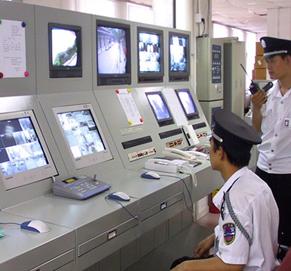
Face recognition technology has been applied in many fields since its discovery. Although the benefits of this technology have been recognized by many people, there are still technical defects. The recognition rate of the face is a key technology. It mainly depends on the algorithm. Although it has been improving, it is difficult to surpass the human itself. However, the new algorithm invented by two scientists at the Chinese University of Hong Kong recently broke the bottleneck for the first time.
Each of us has been unable to recognize the experience of someone we have known. Under different postures, illuminations and expressions, this is actually a relatively difficult matter. Computer identification systems also have these problems. In fact, despite the efforts of computer scientists all over the world for so many years, none of the computer identification systems are as powerful as humans in recognizing human faces.
However, this is not to say that the face recognition system is not accurate enough. On the contrary, the best face recognition system performs better than human recognition in an ideal situation. However, once the environmental situation deteriorates, the performance of the system is far from satisfactory. Computer scientists, of course, are very much interested in developing an algorithm that can perform well under all circumstances.
Now, the new algorithm invented by Lu Chaochao and Tang Xiaoou of the Chinese University of Hong Kong can find the face of the same person from more than 13,000 photos, with an accuracy rate of 98.52% (97.53% for humans). This program, named Gaussian Face, has for the first time surpassed humans in its face recognition algorithms, and is expected to enable applications from login to passport security.
The new identification system can provide human-level recognition capabilities for a variety of platforms, from mobile phones to face recognition in computer games, from security systems to password control and more.
Human Face Recognition Rate For any automatic face recognition program, the first thing to consider is to build a suitable data set to test the algorithm. It requires a very wide range of images of various faces with various complex movements, lights and expressions. All races, ages and genders must be taken into consideration. Then we must examine the effects of other factors such as clothing, hairstyles, and make-up.
Fortunately, there is already a standard database with various faces, called Lasered Faces. It has more than 13,000 images of different faces, which are 6,000 different public figures collected from the Internet. More importantly, everyone has more than one face picture.
There are also other face databases, of course, but currently, Lableded faces are the most valuable test data sets that computer scientists have come to recognize.
The task of facial recognition is to compare two different pictures and then determine if they are the same person. (You can try and see if you can see if each pair of pictures shown here is the same person.)
Human performance on this database can reach 97.53% accuracy. But no computer algorithm can achieve this result.
Until the emergence of this new algorithm. The new algorithm normalizes each face image to a 150*120 pixel map according to the 5-point image feature. These features are: the positions of the two eyes, nose, and mouth corners.
The algorithm then divides each picture into overlapping 25*25 pixel regions and uses a mathematical vector to describe the basic features of each region. After doing this, you can compare the similarities of the two pictures.
But the first thing to know is what to compare. This time you need to use training data sets. The general approach is to use an independent data set to train the algorithm and then use the same data set to test the algorithm.
However, when the algorithm faces two images that are completely different in the training set, failures are often identified. "When the distribution of the picture changes, this training method is not good at all." Chaochao and Xiaoou said.
Instead, they test the Gaussian algorithm with four completely different data sets that have different pictures. For example, one of the datasets is the well-known Multi-PIE database, which contains 337 different objects. From 15 different angles, 4 sets of images were taken in 19 different lighting conditions. Another database called LifePhotes contains 400 different characters and each character has 10 images.
After training the algorithms with these databases, they eventually let the new algorithm be tested on the “Labelled Faces†database. The goal is to identify all matched and unmatched pairs of pictures.
Keep in mind that human performance on this database is 97.53% accurate. "Our "Gaussian" algorithm can achieve an accuracy of 98.52%, which is the first time the recognition algorithm has beaten humans." Chaochao and Xiaoou said.
This is an impressive result because the photos in the data contain a variety of different situations.
Chaochao and Xiaoou pointed out that there are still many challenges waiting for them. In reality, people can use various additional clues to identify, such as the position of the neck and shoulders. "Beyond human performance may be just a symbolic achievement," they said.
Another problem is the time spent on training new algorithms, the memory size required by the algorithm, and the time required to identify the two images. This can be done using techniques such as parallel computing and specially crafted processors to speed up the algorithm's runtime.
Most of the Safety T-Shirt are constructed from the high performance, lightweight and quick drying brideyes fabric, which is specially designed to allow increased airflow and helps to maintain a balanced core bady temperature, the fabric is durable and keeps its shape well. All of our styles are cleverly designed with strategically positioned reflective tapes which allow for garment stretch and optimal wearer movement. The reflective tape of this kind of vest can be hot patch or sewed.
Safety T-Shirt,Reflective T-Shirt,Safety Shirts,Safety Yellow Shirts
Xinxiang Zhongke Reflective Material Co., Ltd. , https://www.zkprotective.com
